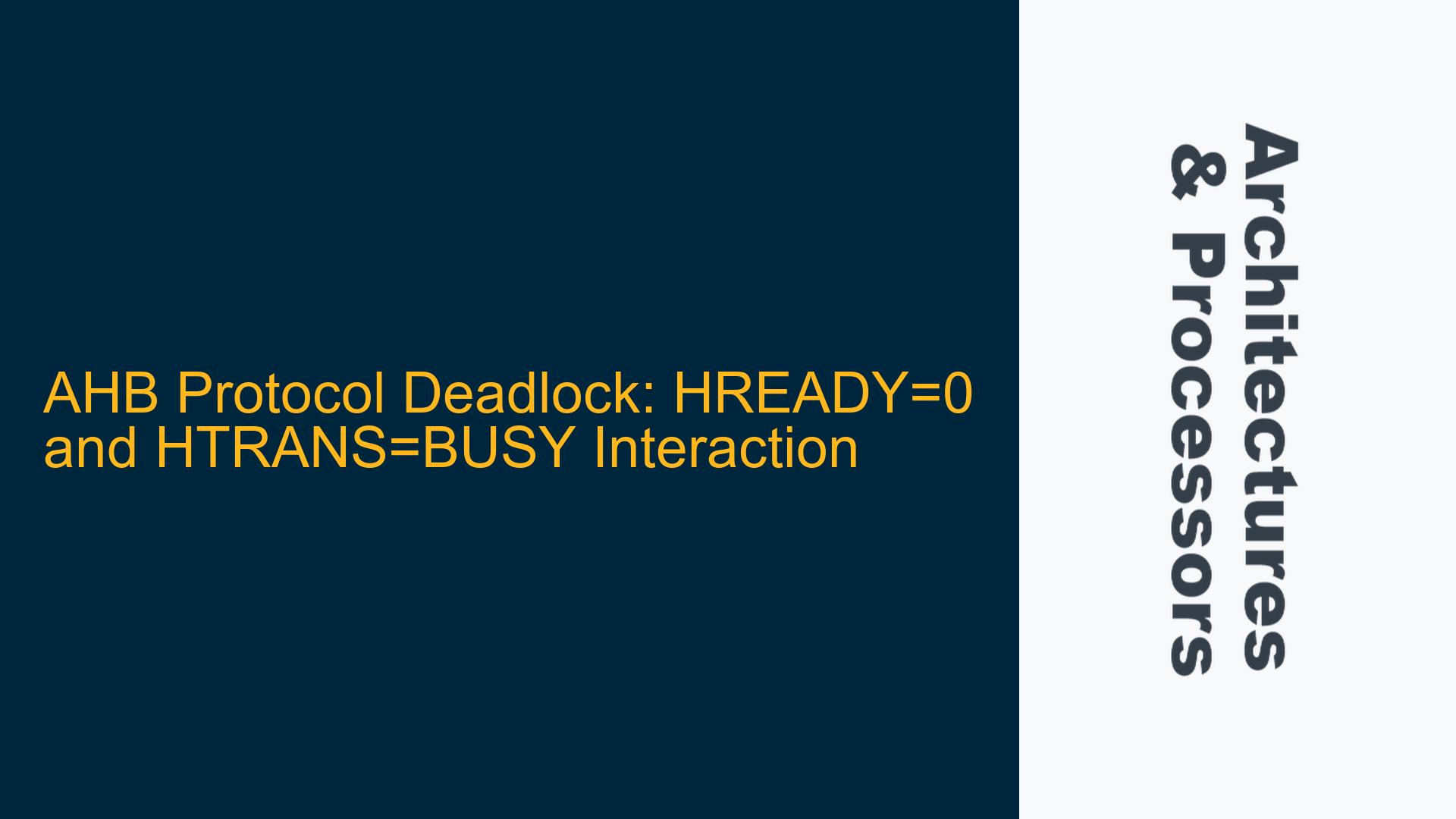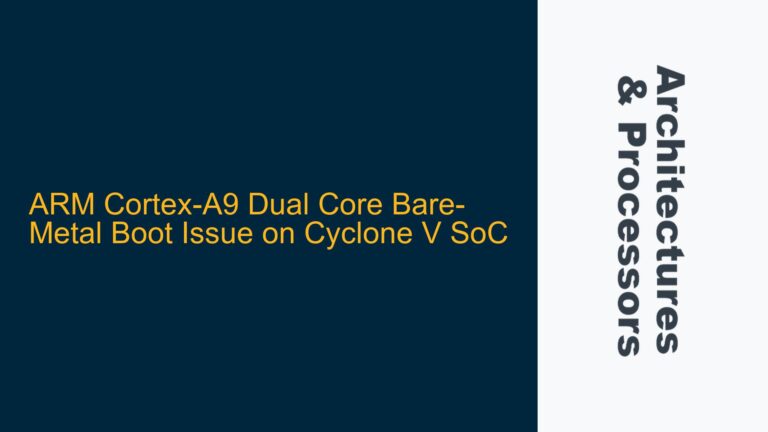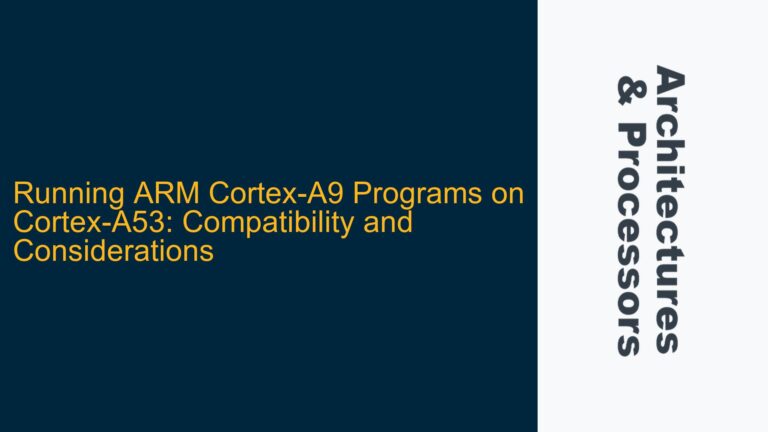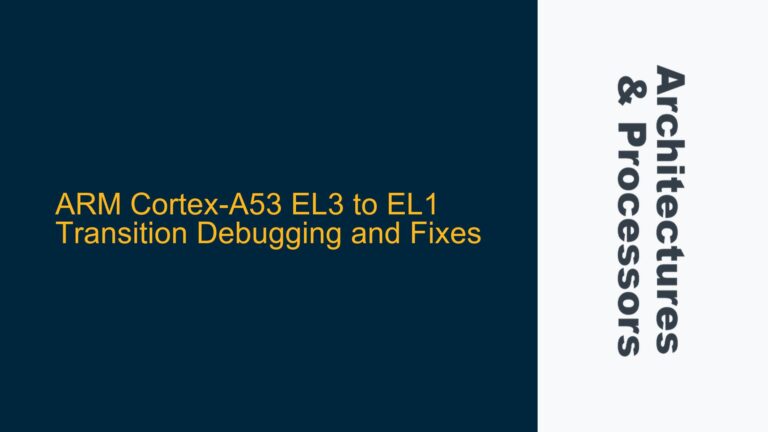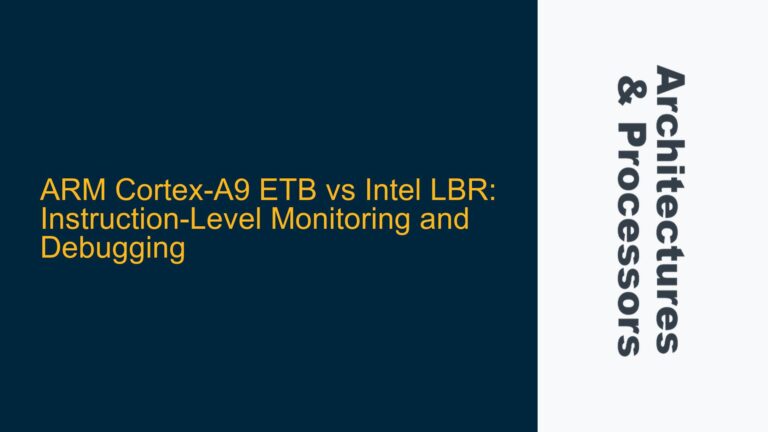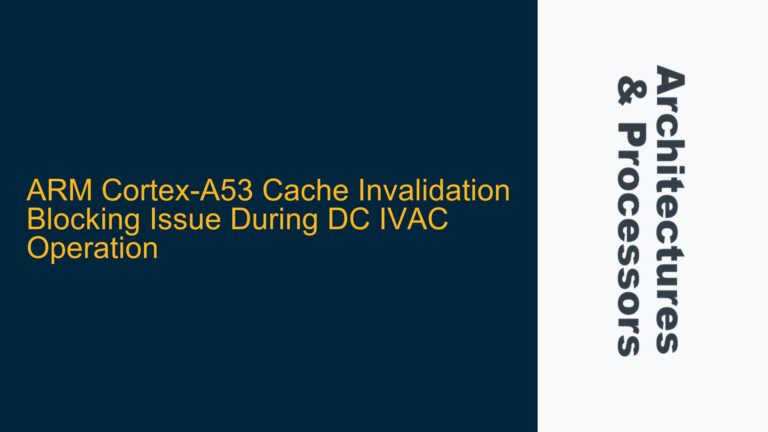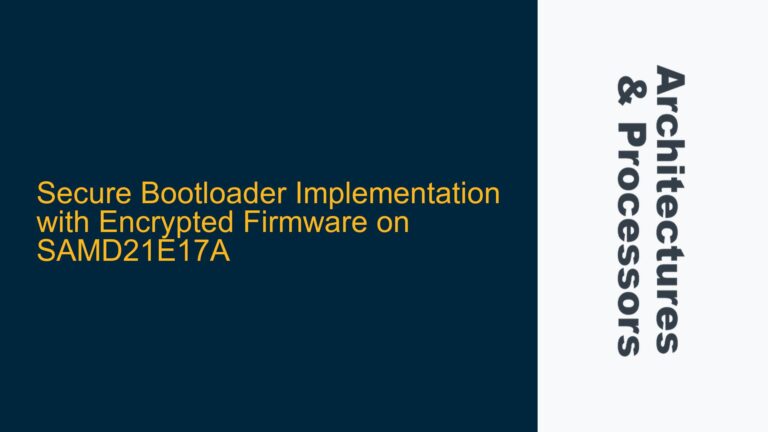AHB Protocol Timing and Signal Interaction During Burst Transfers
The Advanced High-performance Bus (AHB) protocol is a critical component of ARM’s AMBA (Advanced Microcontroller Bus Architecture) family, widely used in SoC designs for high-performance data transfers. One of the key challenges in AHB-based systems is understanding the precise timing and interaction between the HREADY and HTRANS signals, especially during burst transfers of undefined length. The HREADY signal, driven by the slave, indicates whether the slave is ready to complete the current data transfer. The HTRANS signal, driven by the master, specifies the type of the current transfer, which can be IDLE, BUSY, NONSEQ, or SEQ.
In the scenario where the slave asserts HREADY=0 (indicating a wait state) and the master asserts HTRANS=BUSY (indicating that the master is temporarily unable to continue the burst), a potential deadlock condition can arise if the protocol’s timing rules are not fully understood. This situation is particularly critical during incrementing burst transfers of undefined length, where the master may insert BUSY states to manage internal buffering or arbitration. The AHB specification does not explicitly address this specific interaction, leading to ambiguity in implementation and verification.
The core issue revolves around whether the slave should wait for the master to change HTRANS from BUSY to NONSEQ/SEQ before asserting HREADY=1, or if the slave can independently assert HREADY=1 regardless of the HTRANS state. Misinterpreting this interaction can lead to deadlock conditions, where both the master and slave are waiting for each other to change their respective signals, effectively halting the bus transaction.
Slave Wait State Handling and Master BUSY State Timing
The root cause of the perceived deadlock lies in the misinterpretation of the AHB protocol’s timing rules, specifically the relationship between the address phase and data phase of a transfer. The AHB protocol operates in a pipelined manner, where the address phase of a transfer occurs one cycle before the corresponding data phase. This pipelining allows for higher bus utilization but introduces complexity in signal timing and interaction.
When the slave asserts HREADY=0, it is responding to the data phase of the previous transfer, which must have been a NONSEQ or SEQ transfer. The HREADY=0 signal indicates that the slave requires additional cycles to complete the data transfer. This wait state is independent of the current address phase, where the master may assert HTRANS=BUSY. The BUSY state allows the master to insert idle cycles into the burst transfer without terminating the burst. The master uses BUSY states to manage internal resources, such as buffer availability or arbitration with other bus masters.
The confusion arises from the assumption that the slave’s HREADY=0 response is directly related to the master’s current HTRANS=BUSY state. In reality, these signals operate in different phases of the pipeline. The slave’s HREADY=0 is associated with the data phase of the previous transfer, while the master’s HTRANS=BUSY is associated with the address phase of the current transfer. This decoupling means that the slave can continue to assert HREADY=0 for as many cycles as needed, regardless of the master’s HTRANS state.
However, when the data phase of the previous transfer finally completes (HREADY=1), the master’s HTRANS=BUSY state is sampled. At this point, the protocol requires the slave to provide a single-cycle HREADY=1 response with HRESP=OKAY. This ensures that the BUSY state is correctly acknowledged and that the burst transfer can continue without interruption. The key insight is that the slave’s HREADY signal is not directly influenced by the master’s HTRANS state during the wait state, but rather by the completion of the previous data transfer.
Protocol-Compliant Slave and Master Behavior for Avoiding Deadlock
To avoid deadlock and ensure correct operation of the AHB protocol, both the slave and master must adhere to specific behaviors during the interaction of HREADY=0 and HTRANS=BUSY. The slave must recognize that its HREADY=0 signal is associated with the data phase of the previous transfer and not the current address phase. The slave should continue to assert HREADY=0 until it is ready to complete the data transfer, regardless of the master’s HTRANS state.
Once the slave is ready to complete the data transfer, it should assert HREADY=1. At this point, the master’s HTRANS=BUSY state is sampled, and the slave must provide a single-cycle HREADY=1 response with HRESP=OKAY. This ensures that the BUSY state is correctly acknowledged and that the burst transfer can proceed. The slave should not wait for the master to change HTRANS from BUSY to NONSEQ/SEQ before asserting HREADY=1, as this would introduce unnecessary delays and potential deadlock.
The master, on the other hand, must ensure that it correctly manages the insertion of BUSY states during burst transfers. The master should only assert HTRANS=BUSY when it needs to insert idle cycles into the burst, and it should ensure that the BUSY state is correctly acknowledged by the slave. The master should also be prepared to handle the case where the slave asserts HREADY=0 for multiple cycles, ensuring that it does not prematurely terminate the burst transfer.
In terms of verification, it is essential to create test scenarios that specifically target the interaction between HREADY=0 and HTRANS=BUSY during burst transfers of undefined length. These scenarios should include cases where the slave asserts HREADY=0 for varying numbers of cycles, and the master asserts HTRANS=BUSY at different points in the burst. The verification environment should monitor the timing of the HREADY and HTRANS signals to ensure that they adhere to the protocol’s requirements and that no deadlock conditions occur.
Additionally, the verification environment should include assertions to check that the slave provides a single-cycle HREADY=1 response with HRESP=OKAY when the data phase of the previous transfer completes and the master’s HTRANS=BUSY state is sampled. These assertions should be triggered at the appropriate points in the simulation to ensure that the protocol’s timing rules are correctly followed.
In conclusion, the interaction between HREADY=0 and HTRANS=BUSY in the AHB protocol is a complex but well-defined aspect of the protocol’s operation. By understanding the decoupling of the address and data phases, and by adhering to the protocol’s timing rules, designers and verification engineers can avoid deadlock conditions and ensure correct operation of their AHB-based systems. The key is to recognize that the slave’s HREADY=0 signal is associated with the data phase of the previous transfer, and that the master’s HTRANS=BUSY state is associated with the address phase of the current transfer. By following these guidelines, and by thoroughly verifying the interaction between these signals, designers can ensure robust and reliable operation of their AHB-based SoCs.
